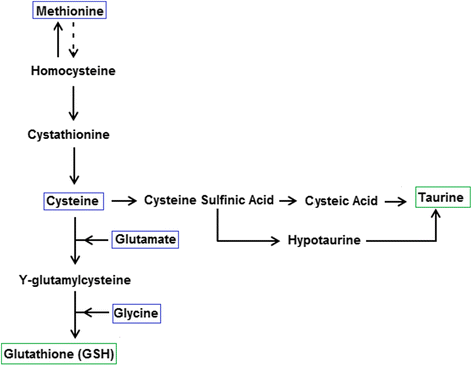Dietary thiols in exercise: oxidative stress defence, exercise performance, and adaptation
- PMID: 28465675
- PMCID: PMC5408473
- DOI: 10.1186/s12970-017-0168-9
Dietary thiols in exercise: oxidative stress defence, exercise performance, and adaptation
Abstract
Endurance athletes are susceptible to cellular damage initiated by excessive levels of aerobic exercise-produced reactive oxygen species (ROS). Whilst ROS can contribute to the onset of fatigue, there is increasing evidence that they play a crucial role in exercise adaptations. The use of antioxidant supplements such as vitamin C and E in athletes is common; however, their ability to enhance performance and facilitate recovery is controversial, with many studies suggesting a blunting of training adaptations with supplementation. The up-regulation of endogenous antioxidant systems brought about by exercise training allows for greater tolerance to subsequent ROS, thus, athletes may benefit from increasing these systems through dietary thiol donors. Recent work has shown supplementation with a cysteine donor (N-acetylcysteine; NAC) improves antioxidant capacity by augmenting glutathione levels and reducing markers of oxidative stress, as well as ergogenic potential through association with delayed fatigue in numerous experimental models. However, the use of this, and other thiol donors may have adverse physiological effects. A recent discovery for the use of a thiol donor food source, keratin, to potentially enhance endogenous antioxidants may have important implications for endurance athletes hoping to enhance performance and recovery without blunting training adaptations.
Keywords: Antioxidant; Endurance; Thiol.
Figures

Similar articles
-
Vitamin C and E supplementation prevents some of the cellular adaptations to endurance-training in humans.Free Radic Biol Med. 2015 Dec;89:852-62. doi: 10.1016/j.freeradbiomed.2015.10.412. Epub 2015 Oct 19. Free Radic Biol Med. 2015. PMID: 26482865 Clinical Trial.
-
Exercise and oxidative stress: potential effects of antioxidant dietary strategies in sports.Nutrition. 2015 Jul-Aug;31(7-8):916-22. doi: 10.1016/j.nut.2015.02.005. Epub 2015 Feb 19. Nutrition. 2015. PMID: 26059364 Review.
-
Antioxidant supplementation during exercise training: beneficial or detrimental?Sports Med. 2011 Dec 1;41(12):1043-69. doi: 10.2165/11594400-000000000-00000. Sports Med. 2011. PMID: 22060178 Review.
-
Thiol-based antioxidant supplementation alters human skeletal muscle signaling and attenuates its inflammatory response and recovery after intense eccentric exercise.Am J Clin Nutr. 2013 Jul;98(1):233-45. doi: 10.3945/ajcn.112.049163. Epub 2013 May 29. Am J Clin Nutr. 2013. PMID: 23719546 Clinical Trial.
-
The role of oxidative, inflammatory and neuroendocrinological systems during exercise stress in athletes: implications of antioxidant supplementation on physiological adaptation during intensified physical training.Sports Med. 2015 Apr;45(4):453-71. doi: 10.1007/s40279-014-0282-7. Sports Med. 2015. PMID: 25398224 Review.
Cited by
-
Dietary Thiols: A Potential Supporting Strategy against Oxidative Stress in Heart Failure and Muscular Damage during Sports Activity.Int J Environ Res Public Health. 2020 Dec 16;17(24):9424. doi: 10.3390/ijerph17249424. Int J Environ Res Public Health. 2020. PMID: 33339141 Free PMC article. Review.
-
Effects of Resistance Training on Oxidative Stress Markers and Muscle Damage in Spinal Cord Injured Rats.Biology (Basel). 2021 Dec 27;11(1):32. doi: 10.3390/biology11010032. Biology (Basel). 2021. PMID: 35053030 Free PMC article.
-
Phytochemical Analysis and Antioxidant Effects of Prunella vulgaris in Experimental Acute Inflammation.Int J Mol Sci. 2024 Apr 29;25(9):4843. doi: 10.3390/ijms25094843. Int J Mol Sci. 2024. PMID: 38732062 Free PMC article.
-
Antioxidative properties of phenolic compounds and their effect on oxidative stress induced by severe physical exercise.J Physiol Sci. 2022 Aug 5;72(1):19. doi: 10.1186/s12576-022-00845-1. J Physiol Sci. 2022. PMID: 35931969 Free PMC article. Review.
-
Oxidative stress assessment in breath-hold diving.Eur J Appl Physiol. 2019 Dec;119(11-12):2449-2456. doi: 10.1007/s00421-019-04224-4. Epub 2019 Sep 13. Eur J Appl Physiol. 2019. PMID: 31520216
References
-
- Liu J, et al. Chronically and acutely exercised rats: biomarkers of oxidative stress and endogenous antioxidants. J Appl Physiol. 2000;89(1):21–28. - PubMed
-
- Lehmann M, et al. Training-overtraining: influence of a defined increase in training volume vs training intensity on performance, catecholamines and some metabolic parameters in experienced middle-and long-distance runners. Eur J Appl Physiol Occup Physiol. 1992;64(2):169–177. doi: 10.1007/BF00717956. - DOI - PubMed
Publication types
MeSH terms
Substances
LinkOut - more resources
Full Text Sources
Other Literature Sources
Medical
